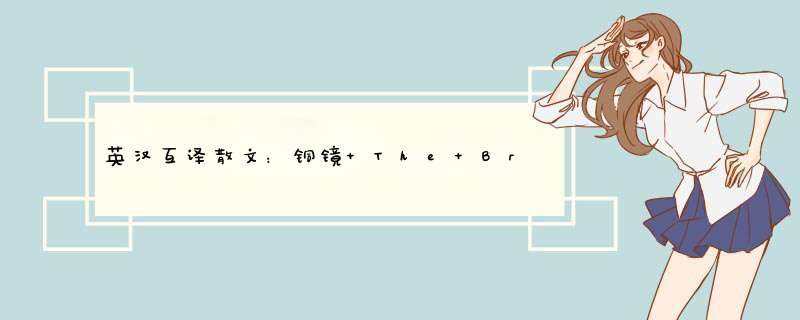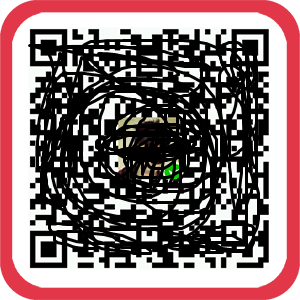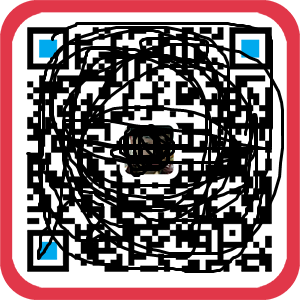
我们在参观博物馆时,常常看到各种古代铜镜。它是我国古代人民用来整容的家庭日用品。这些铜镜大多是从古墓中出土的,也有少数是传世之物。
Whenever we visit a museum, we see various types of ancient bronze mirrors Used as a household necessity for dressing by the ancient Chinese people, these bronze mirrors were mostly unearthed from ancient tombs, while some are kept as heirlooms
早在公元前11世纪,我国先民已经使用铜镜了。战国时期,铜镜在民间盛行。镜的正面磨光发亮,背面有的饰单层或双层花纹,常见的有兽面纹、花叶纹、龙凤纹等。西汉时期,铜镜较厚重,纹饰多几何图案、神人和禽兽纹等。并有铸刻铭文,每句仅三至四字,例如:“长相思”、“毋相忘”、“常富贵”、“乐未央”等。内容多是通俗的吉祥语。宋、元时期出现了圆镜、长方镜、菱镜、八棱镜和带柄手镜等。清代以后,逐渐被玻璃镜所代替。
Our ancestors started to use bronze mirrors in as early as the 11th century BC During the Warring States Period, bronze mirrors prevailed among the populace The front side of the mirrors, after being polished, glistens while the backside is embellished with single-layered or double-layered patterns, among which the commonly seen are thus- of animal faces, flowers and leaves, dragons and phoenixes During the Western flan Period, the bronze mirrors used to be relatively thick and heavy Most of the decorative patterns were of geometrical forms, supernatural figures, or fowls and animals, accompanied by inscriptions of only three or four characters with such meanings as "eternal love", "never to forget", "wealth for ever" and "everlasting happiness" The content frequently dealt with common well-wishings During the Song and Yuan Dynasties the bronze mirrors appeared in all shapes: round, rectangular, rhomboidal, octagonal, and those with a handle Since the Qing Dynasty, however, the bronze mirror has gradually given way to the glass mirror
上海博物馆展出一件铜镜——“透光镜”,它是西汉时期的珍品,直径为11 5厘米。这面铜镜与普通铜镜一样,背面有图案,还有铭文。奇怪的是,当一束光线照到镜面,。反射投影在墙壁上,墙上的光亮圈内竟出现铜镜背面的图案和文字,好像从镜背“透”过来的,故称“透光镜”。对于这种现象,在过去很长的时间里,连科学家们都感到惊奇,人们把它称做“魔镜”。今天,我国已可仿制出售,作为旅游纪念品,很受外国游客的欢迎。
In Shanghai Museum, one finds a treasure of the Western Han Period, the "penetrative bronze mirror", measuring 115 cm in diameter Like ordinary bronze mirrors it bears patterns and inscriptions on the back But what amazes people is that when a bundle of rays is projected onto the surface of the mirror, which, in turn, reflects the light on the wall, the patterns and inscriptions on the backside are shown in the ring of the light, as if they had penetrated the whole thickness of the mirror Hence the name of the mirror For a long time in the past, even scientists were so puzzled at the phenomenon that it was called a "magic mirror" Today, reproductions of this mirror are being made and sold as souvenirs and they appeal very much to tourists
我国古代常把铜镜当做随葬品。在古墓中,往往发现铜镜放置在死者的头顶或胸侧。有时把铜镜和木梳一起放在漆匣内或小荷包里。在发掘古墓时,还发现有的铜镜放在墓顶上方,据说这是为了“辟邪”和“降妖”。
In ancient times, bronze mirrors were very often used as sacrificial objects In the ancient tombs, one can always expect to find bronze mirrors placed on top of the head or beside the chest of the dead Sometimes, bronze mirrors and combs were put together in lacquer boxes or small pouches In unearthing ancient tombs, bronze mirrors were sometimes discovered on the inner topsides, in order to keep away evil spirits and subdue demons, so it was said
魔镜魔镜告诉我,谁是世界上最美丽的女人英语翻译:Mirror, mirror, tell me who is the most beautiful woman in the world。
重点词汇:world
n 世界;领域;世俗;全人类;物质生活
短语
World Bank 世界银行 ; 天下银行 ; 天下银止
New World 新大陆 ; 新世界连锁酒店 ; 新的世界
World Trade Center [贸易] 世界贸易中心 ; 世贸中心 ; 纽约世界贸易中心 ; 世贸大厦
词语辨析
earth, globe, world
这组词都有“地球”的意思,其区别是:
earth 指表面有陆地和水,人类所居住行星的名字。有时与“天”相对,泛指“地”。
globe 指我们生活的地球,但强调其实体和圆形。
world 通常相当于earth与globe,现多用指地球,地球上的世界,社会和人。
天然黑色
例句:
1
Honeybee gardens truly natural mascara black magic
真正自然的睫毛膏黑魔法。
2
Datong natural home have all kinds of green tea, fancy tea, kung fu tea, blacktea and simple meals, and so on
大同市天然居茶楼备有各式绿茶、花式茶、功夫茶、红茶、简餐等。
欢迎分享,转载请注明来源:品搜搜测评网

 微信扫一扫
微信扫一扫
 支付宝扫一扫
支付宝扫一扫
